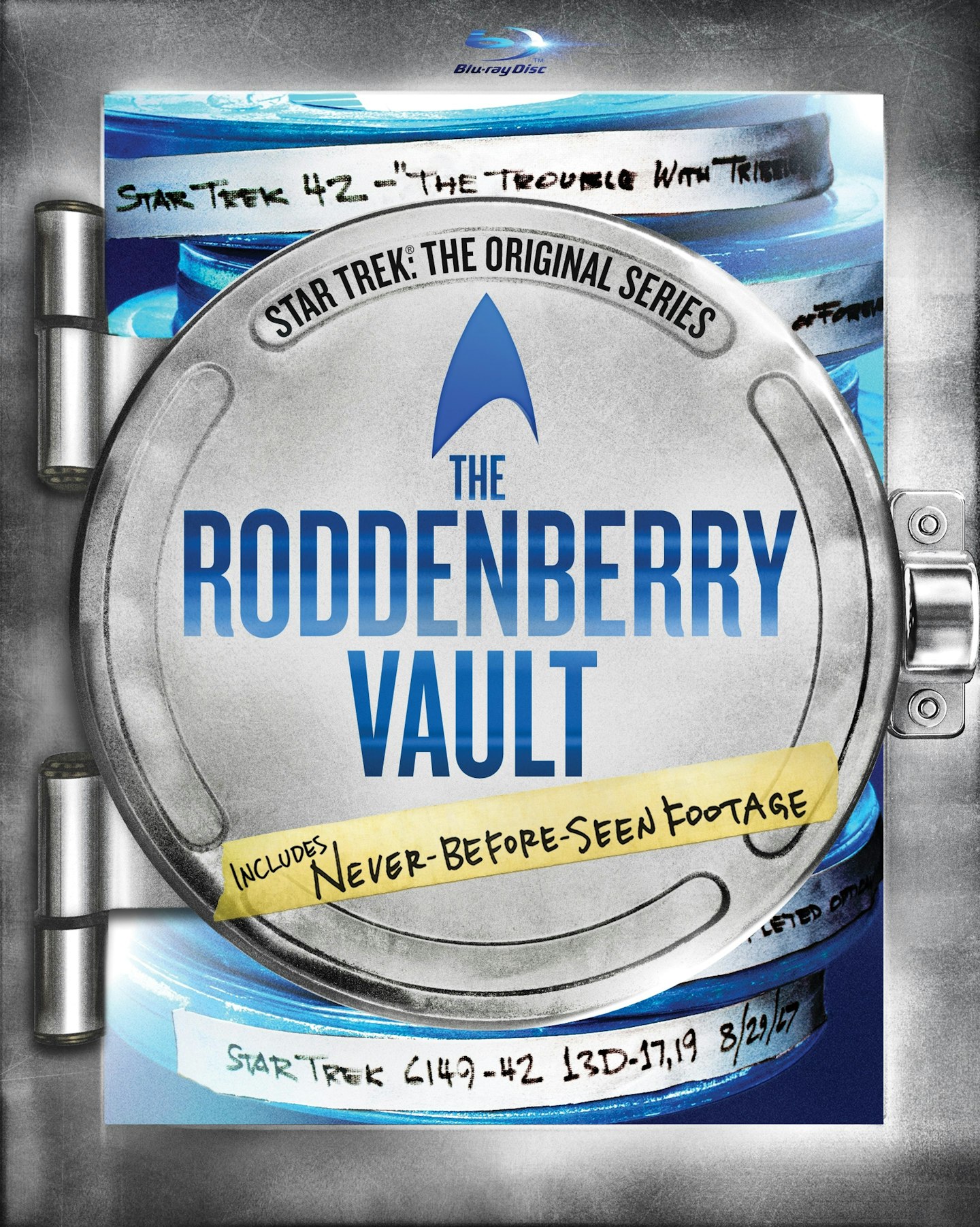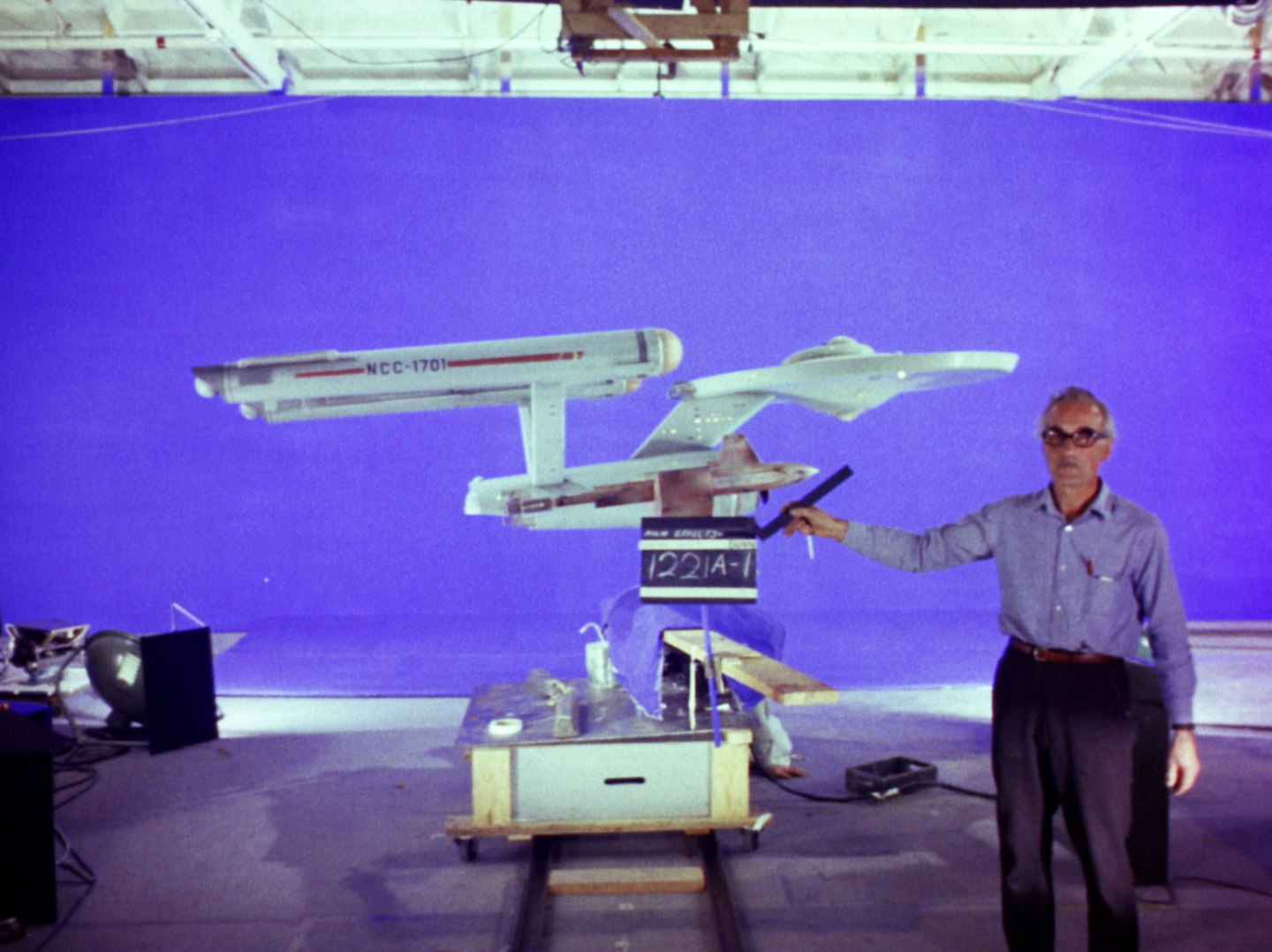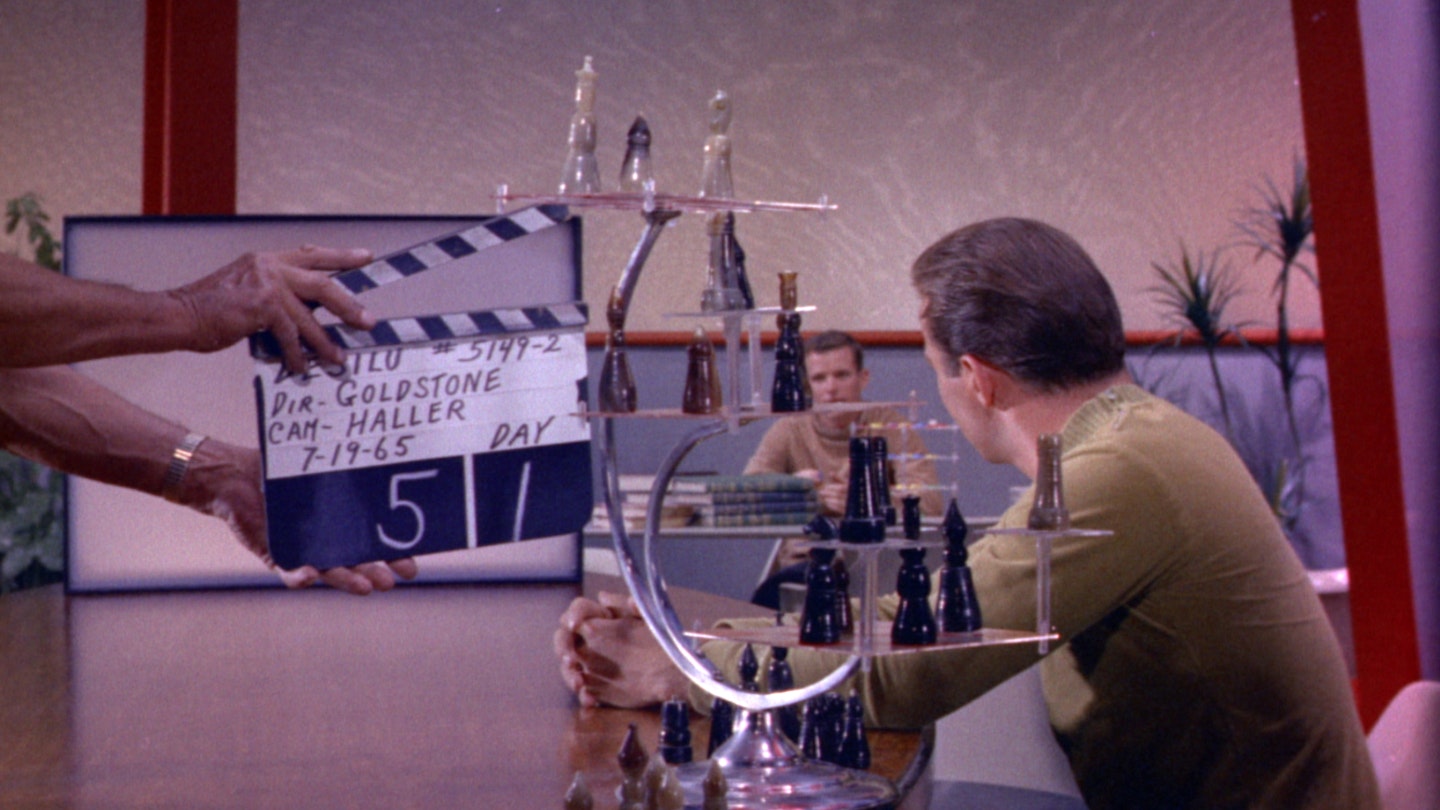If you were looking for the sci-fi equivalent of discovering outtakes or alternate tracks of The Beatles, you'd find it in the Blu-ray release The Roddenberry Vault, which serves as the perfect culmination of the fiftieth anniversary of Star Trek.
During production of the original series, Gene Roddenberry — being the clever bastard he was — retrieved various trimmings from the cutting room floor of Star Trek's edit bays, obstensibly to sell film frames through his merchandise company Lincoln Enterprises, but inadvertently preserving a bit of history at the same time.
Producer/director Roger Lay, Jr. — interviewed below — who had previously overseen the remastering of Star Trek: The Next Generation and Enterprise for their Blu-ray releases, as well as created a wide variety of supporting documentaries — doing the same for the massive Star Trek 50th Anniversary TV And Movie Collection released on Blu-ray back in September — spear-headed this project. The result is this three-disc set, which contains several documentaries showcasing missing sequences, outtakes, alternate takes and extensive behind the scenes interviews on such episodes as "The City On The Edge Of Forever," "Space Seed" (we're talking more Khan!) and "This Side Of Pradise." Also included are the 12 episodes represented in those documentaries.
Encapsulate how this whole Roddenberry Vault project came together, because it truly does represent such a unique achievement.
We had all these clues in the Trek world that they might have filmed more stuff than what we got to see in the finished episodes. There were photographs out there of missing scenes, and there were also the James Blish novelizations of the episodes. He was working from shooting scripts, basically, and those novelizations have scenes in them or moments that were not in the final episodes, like the ending of "Who Mourns For Adonais?" revealing that Catherine [Carolyn in the episode] Palamas is pregnant with Apollo's child. That wasn't in the episode, but you could read it in the novelization, so it made you go, "Is this something James Blish came up with, or was this filmed?" As it turns out, it was filmed.
There were all those clues out there, but we're talking about a fifty-year-old show, and a show that has been explored over and over again in terms of documentaries and making-of books, and countless articles and everything from fanzines to fan websites that have explored every aspect of Star Trek.
Then, some years ago, Rod Roddenberry, Gene's son, finally approached CBS and said, "Look, my family has been holding onto these boxes of film canisters for decades." As Rod was telling us, at one point they even had them in the basement of their house in Beverly Hills and that house flooded in the nineties, so they moved them out of there and put them in a warehouse. From there they moved them to a film archive. The family kept holding onto it, because it was Gene's, and it was stuff that Gene had taken from the edit bay during the making of the show.

A number of years ago, Rod and his business partner, Trevor Roth, went to CBS and said, "We have this stuff. We don't know the quality or how interesting it is, but we'd like to find out." CBS felt the same way about it, so CBS took this gigantic leap of faith where they agreed to spend some money to take everything out, look through it, transfer it, and create digital files. And that was a process that took years.
As we got closer to the fiftieth anniversary, CBS started thinking it's the perfect time to reveal this stuff. By then I had finished my work remastering Star Trek: The Next Generation and the Enterprise Blu-rays, and all the other things I'd been doing for CBS over the years, and I could finally sit down with Phil Bishop and Ken Ross and the other executives there and look through the stuff that [consultants] Michael and Denise Okuda had cataloged, and figure out what is the best way to utilize it, what is the best way to share it with the fans, and how we could get this figured out in time for the fiftieth anniversary.

So the real question becomes, what was discovered?
It varies from a couple of interesting seconds to maybe having all the elements to build together a three-minute deleted moment from an episode, to just what we call the fly-on-the-wall moments where the camera is running and you see the actors getting into character; to outtakes, to original visual effects elements that really give you a great, clean look at how these groundbreaking images were first created. It was all over the board, and our thought was, "Let's utilize it all." The best way to do that, I felt, was to create a narrative; build a narrative that guided you through the importance of this footage, that provided proper context for everything and that, this being the fiftieth anniversary of Star Trek, also celebrated the origins of the show and reminded us of why it is so iconic, why it was so groundbreaking.

What's particularly exciting about this is the fact that back in the 1960s, few people were actively archiving the actual making of a television series the way they do today, so for this material to even exist in the first place is pretty amazing.
Exactly. You forget that this was being put together at a time where we didn't have any of the technologies we have now. We didn't have the methodologies we have now. What Gene and everybody involved with the show were doing was really groundbreaking, and they were doing it with very little resources. A lot of this footage helped us paint a picture of what it was like for them back in the sixties to create something that has become iconic. That was part of the goal, to tell that story.
You do documentaries for a living, but was it difficult to figure out exactly how to present it? Do you just throw the clips out there and say, "Here's lost footage. Enjoy"?
That wasn't satisfying, to me or to any of us involved. I knew what I wanted. I knew what I needed the end result to be, basically, but then it's a matter of, "Well, do we have the right pieces? And the pieces we do have, will they help us tell that story? Is there a way to bring them all together into a narrative?" And with all of that, you're running out of time, because you're trying to make the fiftieth anniversary.
What happens is, there's a lot of trial and error. You highlight what are the key visuals from the Roddenberry vault that you want to show, and then you have to find the right way to set them up and the right way to segue from one to the next, you know? The key to that was that we were constantly conducting interviews — over sixty of them over six or seven months.
If we were cutting together a sequence to set up the importance of an episode like "City On The Edge Of Forever", and properly set up the moments that were deleted and have the viewer understand how they would maybe make the episode more emotional, or how the creative editorial decisions of the filmmakers back then affected the final outcome in terms of what the episode ended up being, we would just go back and forth and edit these things, and then go back and film more interviews with either Trek experts or people who did work on the show to provide further context. It got to the point where I was asking such specific questions, because I knew what little piece was missing to properly set up a clip from the vault. It got that specific.
It kept going until we felt like the story was there for every little piece from the vault that we included. You don't have to be a big Star Trek fan to understand its value or its emotional impact. We felt we needed to create documentaries that guided the viewer in an insightful but entertaining way, so that they never felt left out.
The Roddenberry Vault is now available
